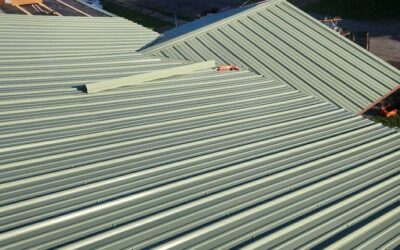Everything You Need to Know About Roof Sheathing
Introduction
Roof sheathing is a critical component of any roofing system. It acts as the foundation for roofing materials, providing structural support and a surface for shingles or other coverings to attach to. Whether you are planning a new roof installation or a renovation, understanding roof sheathing is essential.
In this guide, we’ll explore what roof sheathing is, its types, benefits, installation process, and how to choose the best sheathing material for your roof.
Table of Contents
- What Is Roof Sheathing?
- Types of Roof Sheathing
- Benefits of Proper Roof Sheathing
- How Roof Sheathing Is Installed
- Common Issues with Roof Sheathing
- Choosing the Right Sheathing for Your Roof
- Signs Your Roof Sheathing Needs Replacement
- Cost of Roof Sheathing
- Conclusion
1. What Is Roof Sheathing?
Roof sheathing, also known as roof decking, is a layer of wood or other structural material installed directly onto the roof trusses or rafters. It provides a stable base for roofing materials such as shingles, metal panels, or tiles.
Key Functions:
- Adds structural stability to the roof.
- Supports and secures roofing materials.
- Helps distribute weight evenly across the roof.
- Provides a moisture barrier when used with underlayment.
2. Types of Roof Sheathing
There are two main types of roof sheathing used in construction:
1. Oriented Strand Board (OSB)
- Made from compressed wood strands and adhesives.
- Cost-effective and widely used in modern construction.
- Lightweight and strong.
2. Plywood Sheathing
- Made from thin layers of wood glued together.
- More durable than OSB and resists moisture better.
- Commonly used in areas with extreme weather conditions.
Other Materials:
- Wood Boards: Used in older homes but less common today.
- Metal or Concrete Sheathing: Used in specialized construction projects.
3. Benefits of Proper Roof Sheathing
Properly installed roof sheathing provides several advantages:
- Enhances Roof Strength: A solid base ensures the longevity of the entire roofing system.
- Improves Energy Efficiency: Works in combination with insulation to regulate indoor temperature.
- Prevents Roof Leaks: Provides an extra layer of protection against moisture.
- Supports Roof Loads: Handles the weight of shingles, snow, and other elements.
4. How Roof Sheathing Is Installed
Step-by-Step Installation Process:
- Measure and Cut Panels: Sheathing panels are cut to fit the roof dimensions.
- Secure Panels to Rafters: Panels are nailed or screwed to the rafters.
- Leave Expansion Gaps: Small gaps are left between panels to allow for expansion.
- Install Roof Underlayment: A waterproof barrier is added before the final roofing material.
- Inspect for Proper Alignment: Ensures no loose or misaligned panels.
5. Common Issues with Roof Sheathing
1. Water Damage & Rot
- Cause: Leaks, poor ventilation, or trapped moisture.
- Effect: Weakens the structure and can lead to roof collapse.
2. Warping or Bowing
- Cause: Improper installation or exposure to extreme heat and humidity.
- Effect: Uneven roof surface and poor shingle adhesion.
3. Mold and Mildew Growth
- Cause: Moisture accumulation due to poor ventilation.
- Effect: Reduces indoor air quality and weakens the roof deck.
6. Choosing the Right Sheathing for Your Roof
Factors to consider when selecting roof sheathing:
- Climate: Plywood is better for high-moisture areas, while OSB works well in dry conditions.
- Roofing Material Compatibility: Ensure the sheathing type matches the roofing material.
- Cost: OSB is more affordable, but plywood offers better longevity.
- Weight: Heavier sheathing may require additional roof support.
7. Signs Your Roof Sheathing Needs Replacement
If you notice any of these signs, it may be time to replace your roof sheathing:
- Sagging rooflines
- Soft or spongy spots on the roof
- Water stains on ceilings or attic
- Shingles curling or buckling
- Excessive mold growth in the attic
- Increased energy bills due to poor insulation
8. Cost of Roof Sheathing
Factors Affecting Cost:
- Material Type: OSB is cheaper than plywood.
- Roof Size: Larger roofs require more materials and labor.
- Labor Costs: Professional installation adds to the overall cost.
Estimated Costs:
- OSB Sheathing: $1.50 – $3.00 per square foot.
- Plywood Sheathing: $2.50 – $5.00 per square foot.
- Installation Costs: $1.00 – $2.00 per square foot.
9. Conclusion
Roof sheathing is an essential part of any roofing system, providing strength, stability, and protection against the elements. Choosing the right material and ensuring proper installation will enhance the longevity of your roof and prevent costly repairs.
If you’re considering a roof replacement or new installation, consult a professional roofing contractor to ensure your sheathing is correctly installed and meets your building requirements.
 (440) 307-2060
(440) 307-2060

